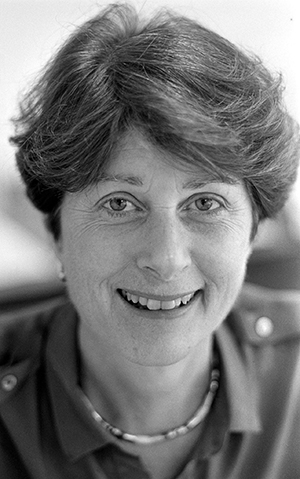NEWSLETTER
|
Marcia Thompson: “Unsung Advocate for the Arts”
She was 94 when she died at her home in New York City.
She worked most effectively at the Foundation as a program officer in the arts and humanities where, as noted in one obituary, in collaboration with the late Ford vice president W. McNeil Lowry she “created the framework for unprecedented, nation-wide expansion of professionally and fiscally sound initiatives, notably in the performing arts”.
Darren Walker, the Ford Foundation president, encapsulated her style and legacy when he said, “With little credit or fanfare, she played a central role in promoting the arts and humanities in America.
“We see Marcia’s legacy every time the curtain rises at New York City Ballet or Alvin Ailey American Dance Theater. She left an indelible mark on America’s regional theaters and symphony orchestras and promoted the idea of cultural diplomacy, sharing the very best of American culture with the rest of the world.”
A statement from the Sherman Foundation, on whose board she served for 38 years until just recently, noted that she always displayed “well-researched and strong opinions” in a “green eyeshade approach that was illuminated by a passion, and even delight, in the arts.
“Often she asked to see a grantee’s financials and audits, helping us to assess their strengths and weaknesses.”
This approach, begun at Ford and emphasizing the fiscal as well as artistic health of grantees, led not only to a nationwide expansion of the number of individual arts organizations but to the creation of the National Arts Stabilization Fund, a consortium of private and corporate philanthropies that she helped found in 1983 and led as its president for nearly a decade.
Her obituary in the Times noted that, through Ford, she enlisted the help of the Mellon and Rockefeller foundations and other benefactors “to rescue cultural organizations that in many cases had grown too fast as they sought to accommodate booming populations, leaving them undercapitalized. Some groups had barely survived for years while sustaining chronic losses”.
It was also noted that the work she and Mr. Lowry fostered at Ford “helped shape the climate” that led to creation of the federal National Endowments for the Arts and the Humanities.
Her influence in shaping the national arts scene was summed up by a former Ford president, Franklin Thomas, who oversaw her work in its most crucial period. “We want to assist arts organizations,” he said, “to become better able to manage their business affairs, so as to free creative talent to do what creative talent should be doing.”
She explained her approach in an article in The Washington Post in 1983, noting matter-of-factly that “Most arts organizations are founded with talent and energy but no capital. In the first months of their fiscal year, they have to put out money for tickets, rehearsals, theater rent and public relations before they can get any money from ticket sales.
“So often they’ve had to borrow money from banks. Our strategy is to help them become their own lenders.”
She elaborated on this approach in a quote in The New York Times in 1985, soon after she left Ford. “Arts groups have been getting a negative message,” she said. “If they don’t run up a deficit they won’t get any money. That attitude consigns them to a crisis-management mentality, and it erodes them artistically.”
She added, bluntly, “We’re not interested in stabilizing mediocrity.”
Stanley N. Katz, director of the Princeton University Center for Arts and Cultural Policy Studies, succinctly described her role as “mostly beneath the surface, a sort of godmother to the emergence of the modern nonprofit arts structure”.
Ms. Thompson was born in 1923 in China, where her father was an executive with the Standard Oil Company. Her family moved back to this country when she was a young girl, settling in New Jersey. She attended a Katherine Gibbs Secretarial School and in 1946 was hired as an assistant to the editor of The New York Times magazine, Lester Markel.
She met her husband, Robert Thompson, while working at the Times. He had been a book critic and columnist for the paper and became secretary of the Book of the Month Club. He died in 1979.
It was also while with the Times that she first met Mr. Lowry. Lester Markel sent her to Zürich to help with the development of the newly formed International Press Institute, a global network of journalists, editors and executives dedicated to media freedom and the free flow of news. Mr. Lowry was at the Institute at the time.
Shortly after she went to work for Ford, first with William W. McPeak, a vice president, and then with Mr. Lowry. Together they helped Ford become the country’s largest nongovernmental arts patron and the first to support dance.
The first grants went to the American Repertory Theater, the New England Conservatory and the Handel and Haydn Society. The criteria they set forth was, simply, that the grantee demonstrate a commitment to eliminating its deficit and developing artistic excellence.
A celebratory event on May 31, honoring another of her passions, was held in the Tudor City Greens South Park in the Tudor City complex on the east side of mid-town Manhattan. She had long been involved in the management of Tudor City Greens, a not-for-profit organization dedicated to the preservation and enhancement of two landmarked parks in the complex.
|


